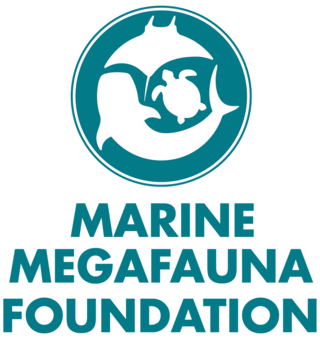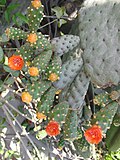
Leptotyphlops is a genus of nonvenomous blind snakes, commonly known as slender blind snakes and threadsnakes, in the family Leptotyphlopidae. The genus is endemic to and found throughout Africa. Eleven species have been moved to the genus Trilepida, and other species have been moved to the genera Epacrophis, Epictia, Mitophis, Myriopholis, Namibiana, Rena, Siagonodon, Tetracheilostoma, and Tricheilostoma.

The Rimatara reed warbler is a species of Old World warbler in the family Acrocephalidae. It is found only in Rimatara in French Polynesia. Its natural habitats are subtropical or tropical dry forests and swamps. Due to its limited geographic distribution, this bird is classified as critically endangered on the International Union for Conservation of Nature (IUCN) Red List of Threatened Species.

The northern barred woodcreeper is a species of bird in the subfamily Dendrocolaptinae. It was formerly included as a subspecies of the Amazonian barred woodcreeper.

Opuntia repens, the roving pricklypear, is a species of cactus that is native to dry forests Puerto Rico and the Virgin Islands. It is a small shrub, growing up to 50 cm (20 in) tall, with yellow flowers and red fruit. Like its cousins, "jumping cholla" Opuntias of the Mojave, Sonoran, and Colorado deserts, it propagates by a segment dislodging after spines are caught in a large mammal's fur, whereby the segment is transported to another location. This is in addition to propagation by seed.
The Redonda ameiva is a species of lizard found only on Redonda. It is sometimes described as a subspecies of the Montserrat ameiva.

Consolea corallicola is a species of cactus known by the common names Florida semaphore cactus and semaphore pricklypear. It is endemic to Florida in the United States, where it is limited to the Florida Keys.

Mammillaria longimamma is a species of cactus from Hidalgo and Querétaro, Mexico.
The West Himalayan bush warbler is a species of Old World warbler in the family Locustellidae. It is found in the northwestern Himalayas.
The Jamaican ameiva is a species of lizard found only in Jamaica.
The grey friarbird is a species of bird in the family Meliphagidae. It is endemic to the southern Moluccas: Kisar, Leti and Moa islands.

The Guinea lidless skink is a species of lidless skinks in the family Scincidae. The species is found on Príncipe, Ilhéu das Rolas, and São Tomé.

Consolea moniliformis is a species of cactus that is native to the Greater Antilles, on Cuba, Hispaniola, and Puerto Rico.

Mammillaria uncinata is a species of cactus in the family Cactaceae. It is endemic to Mexico.

The Marine Megafauna Foundation (MMF) is a marine biology research and conservation nonprofit notable for discovering, researching, and protecting large marine animals including whale sharks, manta rays, sea turtles, whales, and dugongs.



















